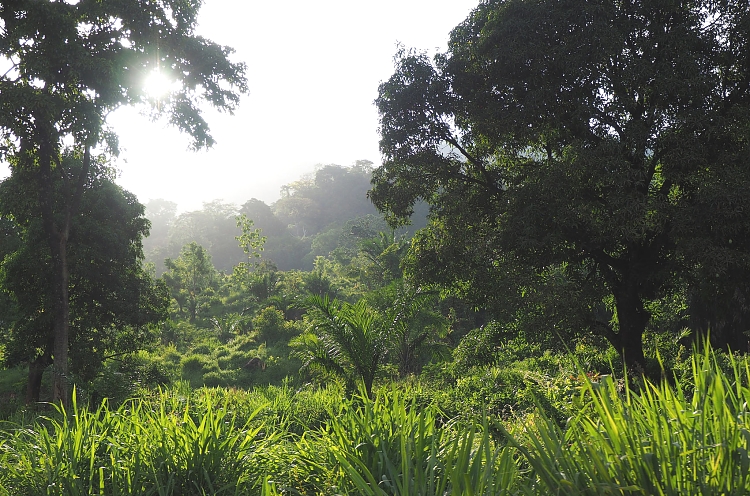
info@gotzsafari.com

The tallest free-standing mountain in the world and the highest peak in Africa, Kilimanjaro is world famous for it’s accessible summits. It’s snowy peak, referred to as Kibo by the local Wachagga people, stands assertively wrapped in clouds overseeing the continent.
Situated in the North East of Tanzania, Kilimanjaro rises in breathtaking isolation from the surrounding coastal scrubland to a height of 5,895 metres with the Kenyan border to the north. The journey to the peak encompasses a myriad of different terrains and landscapes ranging from the tropics to the Arctic. Even before you cross the national park boundary (at the 2,700m contour), the cultivated footslopes give way to lush montane forest, inhabited by elusive elephant, leopard, buffalo, the endangered Abbot’s duiker, and other small antelope and primates. Higher still lies the moorland zone, where a cover of giant heather is studded with otherworldly giant lobelias.
Above 4,000m, a surreal alpine desert supports little life other than a few hardy mosses and lichen. Then, finally, the last vestigial vegetation gives way to a winter wonderland of ice and snow – and the magnificent beauty of the roof of the continent.
CLIMB MOUNT KILIMANJARO
To climb Mount Kilimanjaro is an experience of a lifetime, highly recommended to the adventurous traveller willing to forego some of life’s luxuries for a few days. The summit can be achieved by any physically fit person and no climbing experience is necessary.
Kilimanjaro has six starting gates, three points via which you can access the summit and two descent routes. Hence there are many tour routes, each with different scenery and varying degrees of exertion required. The Marangu and Rongai routes are wildly tipped as the “easiest” trails, and the Machame route is particularly renowned for its stunning scenery. Routes from Umbwe, Lemosho and Shira offer more challenging options. However, it is the duration of a climb that is as important as the ease of the route.
On climbs to the summit it is advisable to join a trek of at least 6 days in order to acclimatise your body to the increasing altitude as you pass through five different climatic zones. Our treks are all done on a private basis and have been carefully devised at around this duration to give you the best chance of success. Longer durations can be arranged for those that would prefer a slower pace.
We can help you sift through the options to tailor a climb to your exact requirements accounting for your levels of fitness and budget.
The Park:
Attractions:
Do not hesitage to give us a call. We are an expert team and we are happy to talk to you.
+420 605 128 796 (John)
+420 731 546 255 (Anna)
+255 757 463 475 (Samwel)
info@gotzsafari.com

The tallest free-standing mountain in the world and the highest peak in Africa, Kilimanjaro is world famous for it’s accessible summits. It’s snowy peak, referred to as Kibo by the local Wachagga people, stands assertively wrapped in clouds overseeing the continent.
Situated in the North East of Tanzania, Kilimanjaro rises in breathtaking isolation from the surrounding coastal scrubland to a height of 5,895 metres with the Kenyan border to the north. The journey to the peak encompasses a myriad of different terrains and landscapes ranging from the tropics to the Arctic. Even before you cross the national park boundary (at the 2,700m contour), the cultivated footslopes give way to lush montane forest, inhabited by elusive elephant, leopard, buffalo, the endangered Abbot’s duiker, and other small antelope and primates. Higher still lies the moorland zone, where a cover of giant heather is studded with otherworldly giant lobelias.
Above 4,000m, a surreal alpine desert supports little life other than a few hardy mosses and lichen. Then, finally, the last vestigial vegetation gives way to a winter wonderland of ice and snow – and the magnificent beauty of the roof of the continent.
CLIMB MOUNT KILIMANJARO
To climb Mount Kilimanjaro is an experience of a lifetime, highly recommended to the adventurous traveller willing to forego some of life’s luxuries for a few days. The summit can be achieved by any physically fit person and no climbing experience is necessary.
Kilimanjaro has six starting gates, three points via which you can access the summit and two descent routes. Hence there are many tour routes, each with different scenery and varying degrees of exertion required. The Marangu and Rongai routes are wildly tipped as the “easiest” trails, and the Machame route is particularly renowned for its stunning scenery. Routes from Umbwe, Lemosho and Shira offer more challenging options. However, it is the duration of a climb that is as important as the ease of the route.
On climbs to the summit it is advisable to join a trek of at least 6 days in order to acclimatise your body to the increasing altitude as you pass through five different climatic zones. Our treks are all done on a private basis and have been carefully devised at around this duration to give you the best chance of success. Longer durations can be arranged for those that would prefer a slower pace.
We can help you sift through the options to tailor a climb to your exact requirements accounting for your levels of fitness and budget.
The Park:
Attractions:
Do not hesitage to give us a call. We are an expert team and we are happy to talk to you.
+420 605 128 796 (John)
+420 731 546 255 (Anna)
+255 757 463 475 (Samwel)
info@gotzsafari.com
